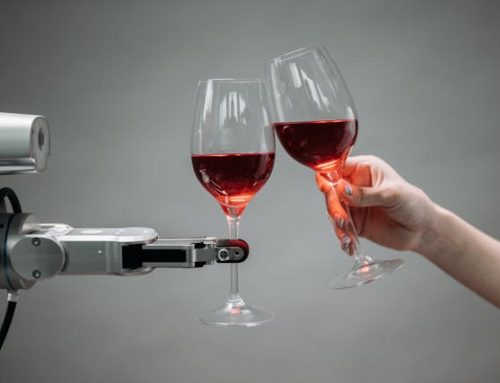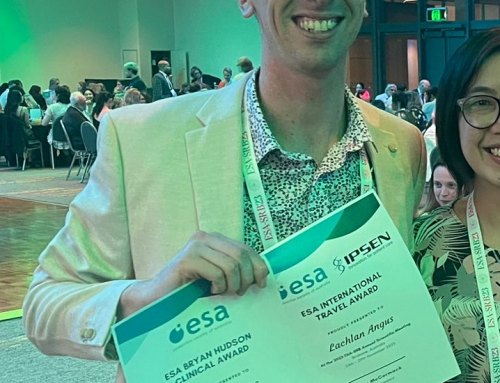
Usually, talking to your internal organs doesn’t make them do what you want, even if you ask nicely. Traditionally, musical mice make things more saccharine, not less. Like a record, scientists have spun these realities right round with the development of a potential diabetes treatment based on sound waves.
Inside your body, there’s a club so elite that its patrons are microscopic. In this dinky discotheque, the cells of your pancreas are the audience to a 24/7 blood sugar concert. When the blood sugar levels increase the crowd goes wild, kicking up a storm and releasing insulin into the bloodstream like glitter at Mardi Gras. But as in any festival, the audience can start to dwindle, stop listening, or give a lacklustre response. When this happens, your blood sugar becomes cacophonous, wreaking havoc on other body parts and ultimately trashing the joint.
Happily, where pancreatic cells are lacking we can now buy insulin from a shop and administer it ourselves. But insulin is a fragile molecule that can’t be swallowed as a pill or rubbed into the skin – it has to be injected. This can be inconvenient at best and painful at worst. A new insulin delivery system developed by Martin Fussenegger and his team at ETH (Federal Institute of Technology) Zurich looks at the potential for engineering cells to produce insulin when they detect sound waves.
Cellular engineering means giving cells the ability to perform a new function. In the case of insulin production, it’s like teaching cells how to dance in time to the music of the blood sugar level. Getting cells to produce insulin is actually pretty easy. It’s getting them to stop, or to start at the right time, at the right speed, in time with other cells that’s the hard part. Ideally, cells would know to kick off only when blood sugar is at a certain level, but this is a level of sophistication that cells in the beginners class have not yet achieved.
The Line-Up
 The support acts for this musical medical marvel includes mechanosensitive ion channels, calcium, and engineered bacteria.
The support acts for this musical medical marvel includes mechanosensitive ion channels, calcium, and engineered bacteria.
Let’s zoom into the cells themselves for a second. Looking at them closely, they’re not just individual dancers, but closed cliques of partygoers. Ion channels are like the bouncers of these cliques. They decide who to let into a cell, and they all have different criteria about who to admit and when to admit them. When these bouncers receive certain signals, they have the go-ahead to open the door to cool ions like calcium.
Like their name suggests, mechanosensitive ion channels are sensitive to physical movement. The tiny hairs in your ear, for example, have mechanosensitive ion channels that detect when those hairs get hit by sound waves. Other kinds of bouncers only open their doors when they detect light, electricity, magnetic fields, or certain chemicals. Whatever the signal, once calcium ions hit the floor the party goes off, and the cells start dancing. In the case of pancreatic cells, this means releasing insulin.
Inner ear cells are naturally attuned to vibration, but pancreatic cells don’t have these mechanosensitive bouncers, only ones that detect chemical concentrations. To create pancreatic cells that could perceive sound, Fussenegger’s team turned to nature’s own virtuosos: bacteria. By borrowing genes from E. Coli that encode for these mechanosensitive ion channels, and then remixing them into human cells, they created a group of cells that could literally feel the music.
Do the jitterbug

Image by César Guadarrama Cantúa on Unsplash
These bio-engineered cells were then placed on a flexible rubber surface above a loudspeaker, like a miniature dance floor that transmitted the beat directly to their tiny shoes.
By playing different kinds of sounds at different volumes, intervals and frequencies, they discovered that the cells partied hardest to hits like Queen’s “We Will Rock You” and low-bass bangers like the Avengers soundtrack. Classical pieces like Beethoven’s Für Elise, the acoustic guitar version of “We Will Rock You” and everyday sounds like conversation and thunder only got them checking their microscopic watches and looking for the exit.
The researchers know they were on the right track when “We Will Rock You” triggered the cells to release two-thirds of their insulin within 5 minutes of hearing the song, and all of their insulin within 15 minutes. By exposing the cells to music again, the cells then replenished their insulin stores within 4 hours. This closely mimics the timing of normal pancreatic cells in response to ordinary stimuli, indicating that these bio-engineered cells aren’t just a one-hit wonder.
As loud as a mouse

After the success of the micro-disco, the scientists implanted the cells into diabetic mice to judge their effect on blood sugar levels in a real animal. A series of private concerts determined that distant sounds, short bursts of music, songs played through headphones or incidental noise weren’t enough to activate the cells – only 15 minutes of sustained bass-heavy music played through a speaker close to the mice’s bellies triggered the production of insulin.
The musical cells hit just the right note, toning the mice’s glucose levels down into the normal range. Mice who weren’t exposed to the music, or only listened to it through AirPods, remained hyperglycemic.
Stay tuned

Scientists aren’t ones to toot their own horn, but this insulin music research could be heralding a new direction in diabetes management. By harmoniously remixing the mechanics of two different sorts of cells, these scientists have started working towards a future where a daily dose of beats (alongside a sensible diet and daily exercise) could be all you need to “Keep Yourself Alive”.







